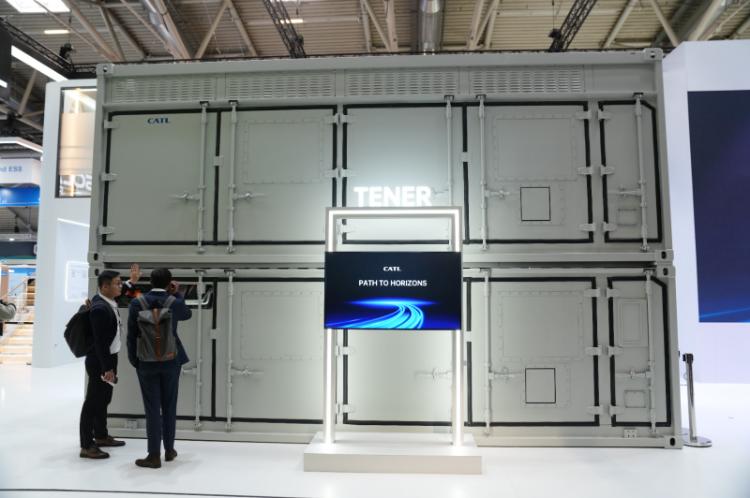
At ees Europe 2025 in Munich, CATL debuted the TENER Stack, the world’s first mass-producible 9MWh ultra-large capacity energy storage system. This groundbreaking solution marks a strategic leap in capacity, deployment agility, safety, and logistics efficiency, setting new benchmarks for the energy storage industry.
Designed to address surging global energy needs—from AI-driven data centers to industrial electrification—the TENER Stack reimagines spatial efficiency.Leveraging CATL's proprietary 5-year zero-degradation high-density cells, the system achieves a 45% improvement in volumetric efficiency and a 50% increase in energy density compared to standard 20-foot container systems. With a single-unit capacity of 9MWh, it can fully charge 150 electric vehicles or power a typical German household for six years.
"CATL remains a pioneer in the energy transition," said Amanda Xu, CTO of ESS & President of ESS Europe at CATL. "The TENER Stack embodies our vision for BESS innovation: maximizing energy density, minimizing footprint, simplifying AC-side configurations, and enabling flexible deployment. It shatters traditional constraints in power capacity, transportation, and cost while revolutionizing space utilization and energy efficiency."
The TENER Stack supports centralized and string PCS architectures, ensuring seamless integration with mainstream AC-side equipment and diverse grid applications. By unifying these technologies, the system slashes deployment complexity and broadens grid compatibility.
Economic Impact:
- Deploying 800MWh of storage requires 33% fewer containers vs. traditional 6MWh systems.
- Reduces PCS units and hidden oversizing costs.
- Boosts land-use efficiency by 40% and cuts total station construction costs by 20%.
- Modular "container-as-power-station" design shortens project timelines to 60% of industry averages.
To overcome 36-ton transport limits in many regions, CATL engineered a dual-module "split design":
- Each half-height unit weighs under 36 tons, complying with 99% of global transport regulations.
- Enables standard shipping tools (container spreaders, liners), reducing wait times and cutting specialized logistics costs by 35%.
- Low-center-of-gravity design navigates height-restricted routes (bridges, rural areas), expanding access to remote sites.
With fire safety under global scrutiny, the TENER Stack integrates:
- LFP battery chemistry with inherent thermal stability.
- 40% more sensitive gas sensors triggering suppression systems 35% faster.
- Triple-layer fire insulation with 2-hour fire resistance.
- IEEE693 seismic certification (withstands Magnitude 9 earthquakes and Category 5 hurricanes).
An overhead thermal management system (TMS) reduces radiation, lowers maintenance costs, and maintains noise at 65dB(A)—ideal for urban integration.
Building on CATL’s proven TENER and TENER FLEX platforms, the TENER Stack merges zero-degradation technology with unprecedented capacity andmobility. By November 2024, CATL’s ESS solutions were operational in 1,700+ global projects, spanning Arctic to equatorial climates.
"The TENER Stack isn’t just a product—it’s a global energy accessibility solution," said Hank Zhao, CTO of ESS Europe at CATL. "9MWh isn’t the ceiling. Every future leap in energy density will unlock exponential value from shrinking footprints."
The TENER Stack heralds a new era of high-density, high-efficiency energy storage, accelerating the global transition to sustainable power.
Next:How to Handle a LiFePO4 Battery Leak: Causes, Risks, and Solutions
Previous:Learn How to Identify and Prevent Lithium Battery Swelling in Devices